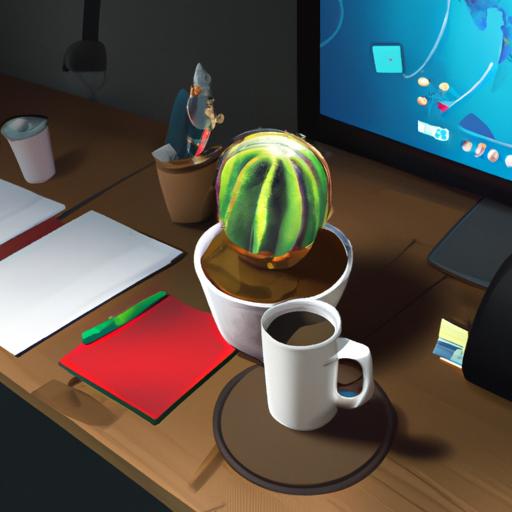Do you want to bring the beauty of a cactus into your home, but arent sure how to care for it? Not to worry! In this article, well discuss the secrets to keeping your cactus healthy, from when is the best time to bring it indoors to how to care for it and common mistakes to avoid.
Well also cover potting soil, pot selection and the signs that your cactus is not thriving.
So if youre ready to learn the secrets to keeping your cactus healthy, read on!.
Table of Contents
Short Answer
Cactus should be brought inside when temperatures are below 50 degrees Fahrenheit.
If temperatures are consistently above 50 degrees, then cactus should be kept outside.
If temperatures are expected to drop below 50 degrees, then it is best to bring the cactus inside before nightfall.
Additionally, cactus should be brought inside if there is a chance of frost, as cactus can be damaged by frost.
What is a Cactus?
A cactus is a type of succulent plant with thick, fleshy stems, adapted to store water in arid climates.
Cacti are native to the Americas, and have adapted to survive in some of the driest and hottest parts of the world.
They come in a variety of shapes and sizes, from small, round potted plants to towering trees.
Cacti can live for many years, and are known for their ability to survive and thrive in harsh conditions.
They are also low maintenance, requiring minimal watering and care.
Cacti are popular household plants, and often used as decorations or a conversation starter in homes and offices.
When is the Best Time to Bring a Cactus Inside?

When it comes to bringing a cactus inside, timing is key.
The best time to move a cactus indoors is at the end of the growing season, when temperatures start to drop and days become shorter.
This will ensure that your cactus has time to adjust to the new environment and get used to lower light levels.
Moving a cactus inside at this time will also help to protect it from extreme weather conditions, like heavy rain, snow, and frost, which can be damaging to the plant.
It is important to transition your cactus slowly when bringing it indoors.
Start by introducing it to a shadier area outdoors before bringing it indoors.
This will allow the cactus to adjust to lower light levels before being exposed to the much lower light levels in your home.
Additionally, it is important to provide your cactus with the right potting soil and pot when bringing it indoors.
This will ensure that the cactus has the right nutrients and drainage capabilities to be healthy and thrive indoors.
When bringing your cactus indoors, it is important to keep in mind that cacti prefer a sunny spot with some indirect light.
If you dont have an area in your home that fits these requirements, you can use a grow light to provide the cactus with the light it needs.
Additionally, it is important to make sure that the soil is kept moist but not soggy, and to check for pests before bringing the cactus indoors.
With proper care and maintenance, your cactus can thrive indoors.
Keeping your cactus healthy and happy will require regular watering, pruning, and fertilizing.
Additionally, it is important to monitor the temperature and humidity levels in your home to make sure they are suitable for your cactus.
By following these steps, you can ensure that your cactus is kept safe and healthy when you bring it indoors.
With proper care and maintenance, your cactus can thrive for years to come!.
How to Transition a Cactus from Outdoors to Indoors
When transitioning a cactus from outdoors to indoors, timing is key.
The best time to move a cactus indoors is at the end of the growing season, when temperatures start to drop and days become shorter.
This will ensure that your cactus has time to adjust to the new environment and get used to lower light levels.
When transitioning a cactus indoors, it is important to do it gradually.
Start by introducing it to a shadier area outdoors.
This will give the cactus time to get accustomed to the lower light levels before bringing it indoors.
Additionally, be sure to provide adequate protection from the elements, such as wind and rain.
Once the cactus is ready to be brought indoors, it is important to have the right potting soil and potting container.
Cactus soil should be well-draining and contain plenty of sand and porous material, such as pumice or perlite.
This will help ensure that your cactus has enough water, but also prevents it from becoming waterlogged.
Additionally, be sure to choose a pot that is slightly larger than the root ball of the cactus, as this will provide ample room for growth.
Finally, be sure to provide your cactus with plenty of light.
If you dont get enough natural sunlight indoors, consider investing in a grow light to provide your cactus with the light it needs.
Additionally, be sure to water your cactus regularly, but be careful not to overwater it.
With proper care and maintenance, your cactus can thrive indoors.
What Potting Soil and Pot are Best for Cacti?

When it comes to selecting the best potting soil and pot for a cactus, it is important to understand the needs of the cactus and the environment it will be living in.
Cacti are desert plants and require well-draining soil in order to thrive.
Therefore, it is important to select a potting soil that is specifically formulated for cacti and succulents.
This type of soil will have a coarse texture and will be designed to promote drainage and aeration.
Additionally, the pot should have drainage holes in the bottom to allow excess water to escape.
When choosing a pot, the size of the pot should be slightly larger than the root ball of the cactus.
This will give the cactus room to grow and will ensure it has enough space to absorb water and nutrients.
Additionally, the pot should be made of a material that will not absorb moisture, such as terracotta or plastic.
It is also important to select a pot with a wide base to ensure the cactus is stable and does not tip over.
Finally, it is important to remember that cacti need plenty of light in order to thrive.
Therefore, it is best to keep the pot in an area that receives plenty of indirect sunlight.
By following these tips, you can ensure that your cactus will be properly taken care of and will be able to thrive indoors.
How to Care for an Indoor Cactus
When it comes to caring for an indoor cactus, timing is key.
The best time to move a cactus indoors is at the end of the growing season, when temperatures start to drop and days become shorter.
This will ensure that your cactus has time to adjust to the new environment and get used to lower light levels.
Be sure to slowly transition your cactus, first by introducing it to a shadier area outdoors before bringing it indoors.
Once your cactus is inside, you will need to make sure it has the right potting soil and pot to ensure your cactus is properly taken care of.
For potting soil, use a mix of peat moss, sand, compost, and perlite to ensure good drainage.
Make sure to use a pot with drainage holes at the bottom to help your cactus roots stay healthy.
When it comes to light, cacti need plenty of sunlight to grow and thrive.
Make sure to place your cactus near a sunny window or use a grow light to provide the necessary light.
Additionally, if you have a large cactus, you may need to rotate it periodically to ensure all of its sides get enough light.
When watering your cactus, you will need to proceed with caution.
Cacti need water, but too much can lead to root rot.
Make sure to only water your cactus when the soil has become completely dry.
Additionally, when it is time to water, only water the base of the plant and not the entire pot.
This will help ensure that the water is not sitting in the pot for too long and causing root rot.
Finally, be sure to check your indoor cactus for pests and diseases.
If you spot any, make sure to address the issue quickly to prevent further damage.
With proper care and maintenance, your cactus can thrive indoors.
Common Mistakes When Caring for an Indoor Cactus

When it comes to caring for an indoor cactus, there are certain mistakes that are commonly made.
One of the most frequent mistakes is not providing enough light.
Cacti need plenty of light to thrive, and can easily become spindly and weak when deprived of it.
Its important to place your cactus near a sunny window or to use a grow light to supplement natural light.
Another mistake that is often made is overwatering.
Cacti dont need as much water as other plants and can be easily overwatered.
Its best to water your cactus only when the soil is dry and to avoid letting the pot sit in a saucer of water.
Additionally, its important to be sure the pot has proper drainage so that the roots dont become waterlogged.
Finally, many people make the mistake of not providing enough nutrition.
Cacti need to be fertilized regularly to stay healthy and happy.
Its important to use a fertilizer specifically designed for cacti and to follow the instructions carefully.
By avoiding these common mistakes, you can ensure that your cactus will stay healthy and happy indoors.
With proper care and maintenance, your cactus can thrive indoors for many years.
Signs a Cactus is Not Thriving
When it comes to caring for a cactus, it is important to take note of any signs that it may not be thriving in its environment.
While most cacti are naturally resilient, they can still suffer from environmental and health issues.
To ensure that your cactus is happy and healthy, keep an eye out for these signs: 1.
Yellow or pale green leaves This could indicate a lack of nutrients or that the cacti is not getting enough light.
2.
Wilting If your cactus leaves look wilted or droopy, this could mean it needs more water.
3.
Softening If your cactus is soft to the touch, this could mean it is not getting enough light.
4.
Rotting If the base of your cactus is rotting or turning brown, this could mean it is not getting enough water.
5.
Pest infestation If you notice signs of pests such as small bugs or webs, this could mean your cactus is not receiving the proper care it needs.
If you notice any of these signs, make sure to adjust the environment accordingly.
With the right care, your cactus can thrive indoors and continue to bring you joy.
Final Thoughts
Caring for a cactus indoors is a rewarding and enjoyable experience.
With proper timing, transitioning, potting soil, and pot, your cactus can thrive and bring life to any indoor space.
Be sure to pay close attention to signs of distress and take appropriate action if needed.
Now that you know the secrets to keeping your cactus healthy, you are ready to bring one inside and enjoy its beauty for years to come.

